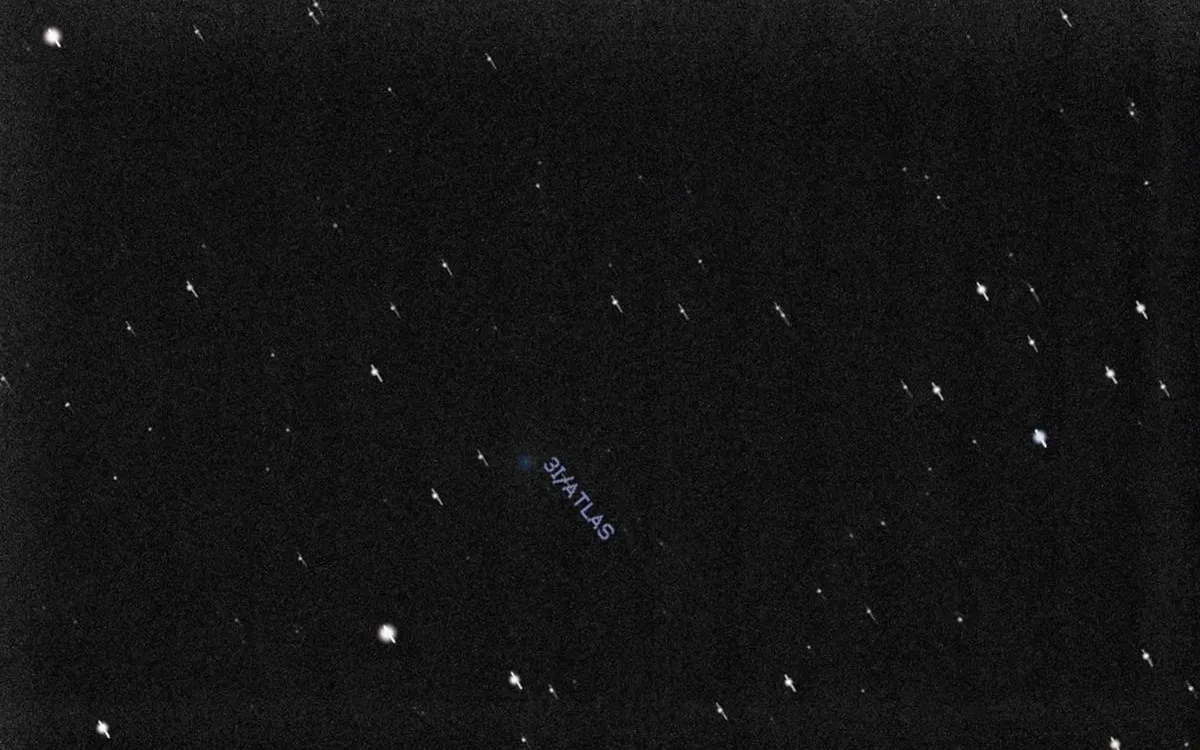
In a recent interview on Newsmax, I had the opportunity to delve into the fascinating anomalies associated with the interstellar object known as 3I/ATLAS. This segment was co-hosted with Rep. Tim Burchett, a prominent member of the House Committee on Oversight and Accountability. Following our discussion, Stephen Miller, the deputy chief of staff for policy at the White House, addressed the topic of the potential U.S. government shutdown and was queried about whether the U.S. President had been briefed on 3I/ATLAS. As of now, no data from human-made Mars orbiters has been publicly released by NASA or the European Space Agency (ESA).
In a subsequent podcast interview with Brian Keating, I shared an interesting anecdote about the astrophotographer Simeon Schmauß. He utilized publicly available images from the Mastcam-Z camera onboard NASA’s Perseverance rover on Mars to stack images, identifying a faint smudge at the expected location of 3I/ATLAS in the Martian sky. Remarkably, on October 3, 2025, 3I/ATLAS made its closest approach to Mars, with a staggering separation of just 29 million kilometers. This proximity should have enabled various Mars orbiters to gather new imaging and spectroscopic data on this intriguing interstellar object.
Multiple Mars orbiters were positioned to capture significant data on 3I/ATLAS, including:
High Resolution Imaging Experiment (HiRISE) camera aboard NASA’s Mars Reconnaissance Orbiter (MRO). This camera is expected to deliver images with an impressive spatial resolution of 30 kilometers per pixel, the highest resolution yet achieved for 3I/ATLAS. The brightest pixel in these images will help infer the diameter of the nucleus of 3I/ATLAS, which is currently anticipated to exceed 5 kilometers. High-Resolution Stereo Camera (HRSC), along with OMEGA and SPICAM spectrometers on ESA’s Mars Express, is likely to provide lower-resolution images and valuable spectroscopic data regarding 3I/ATLAS. The Colour and Stereo Surface Imaging System (CaSSIS) and NOMAD spectrometer aboard ESA’s ExoMars Trace Gas Orbiter (TGO) are set to produce color images and analyze composition data, while the Infrared Spectrometer for ExoMars (ISEM) will focus on the chemical composition of the gas plume surrounding 3I/ATLAS. The Imaging Ultraviolet Spectrograph (IUVS) onboard NASA’s MAVEN spacecraft will deliver UV imaging and spectroscopy of 3I/ATLAS. Moreover, additional images and spectroscopic data are anticipated from China’s Tianwen-1 via the Moderate Resolution Imaging Camera (MoRIC), as well as from the UAE’s Emirates Mars Mission, which includes the Emirates eXploration Imager (EXI) and the Emirates Mars Infrared and Ultraviolet Spectrometers (EMIRS and EMUS).We find ourselves fortunate to witness the transit of an unusually massive and luminous interstellar object like 3I/ATLAS, which is at least a thousand times more massive than its predecessors, 1I/`Oumuamua and 2I/Borisov. This object follows an orbit remarkably aligned with the ecliptic plane of the planets surrounding the Sun, with a random chance of occurrence around 0.2%. Additionally, its timing for a close approach to Mars, Venus, and Jupiter presents an even rarer likelihood of about 0.005%. Whether these extraordinary coincidences are simply a product of random chance or indicative of extraterrestrial intelligent design remains an open question for the Mars orbiters to resolve.
With the data provided by the images and spectrographs from these advanced Mars orbiters, humanity will soon determine whether to express gratitude to nature or to acknowledge the intelligence of a cosmic sibling. The ongoing studies of 3I/ATLAS are crucial in unraveling the mysteries of our universe and exploring the potential for life beyond Earth.
ABOUT THE AUTHOR: [Author information here]